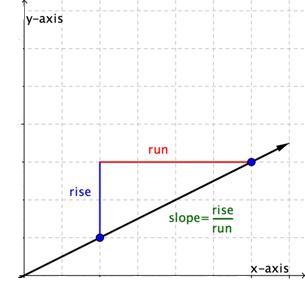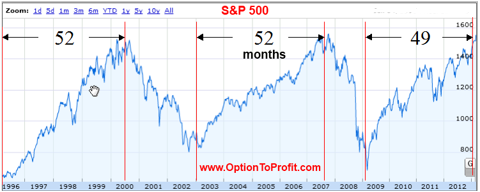 A week ago, it seemed as perhaps the President of Russia, Vladimir Putin was the cause for the sudden turnaround in market fortunes and was the giver of the gift that we had all been expecting this December.
A week ago, it seemed as perhaps the President of Russia, Vladimir Putin was the cause for the sudden turnaround in market fortunes and was the giver of the gift that we had all been expecting this December.
His relative calm demeanor and reasonable words surrounding the sudden collapse of the Ruble and surging interest rates helped to put an equally sudden stop to market fears.
Thank you, Vladimir, but what have you done for us lately?
At least, even with his finger pointing, there hasn’t been any saber rattling and no new obligatory face saving demonstrable shows of bravado on the international front. At least, not yet, but it can get awfully cold in Russia this time of the year. Luckily for them, heating fuel is unusually inexpensive right now, although maybe not so much in Ruble terms.
Fortunately, it seems that there may be others willing to take up the mantle of prodding our markets forward when challenges appear, although it’s not very likely that they would want to do anything to lend us a helping hand or be part of the gift giving.
For the purists, there are still a steady stream of economic reports that can move markets depending on what kind of lens is used to interpret the data. Global personalities playing global games are just ephemeral distractions, even though a day old key economic report is also just as quickly forgotten when the next day’s, often contradictory report, is released.
Then it’s just a question of “what report have you delivered to me lately?”
Everyone should have expected good news coming from this week’s GDP report as the first glimpses of the impact of lower energy prices were revealed. That’s especially the case as 70% of GDP is said to be comprised of consumer spending and most everyone you know feels more wealthy. That’s not because of any great stock market rally but because of falling energy prices. Despite hitting a new record high an average of once each week in 2014 for most people that’s not where the feeling of wealth has come from this year.
The market still rallied in surprise. It was a case of good news being interpreted as good news, the way most normal people would have interpreted it.
What we can now await is the next GDP report which comes the morning after the next FOMC Statement release in January. Being data driven, it may be reasonable to expect that the FOMC may look at the initial data streams reflecting increasing consumer activity and GDP growth and throw “patience” out the window.
Then, we will simply be at the mercy of the lenses that decide whether that news is good or bad for markets as interest rate increases may seem to be warranted sooner than the last FOMC Statement led us to believe.
But this past week, it became clear that
if a Santa Claus Rally does await us these final days of 2014 as the DJIA closed at another record high, the real benefactor may be the diminutive leader of a nation that mandates haircut style and prohibits the personal use of “Dear Leader’s” actual name by anyone other than “Dear Leader” himself.
I don’t want to mention him by name, however, as I don’t deal well with threats or cyber-attacks of any kind, so we’ll just say that we may be able to thank Kim Jong Doe for this week’s establishment of more new closing record highs and setting the stage for the year end rally.
The lunacy surrounding the release of an otherwise inconsequential movie displaced most of our thoughts about the price of oil. While “Dear Leader” said nothing in a calming manner, offering threats rather than constructive strategies, the change of topic was a welcome relief, as oil continued to be a drag on the overall market, but no longer holds it in hostage, at least as long as it can continue to trade in the $54-60 range.
The alleged antics of a nation and a leader so far away was far better to focus upon than anything of substantive value, or anything that could have had us put on one of those lenses that interprets good news as being bad.
As a nation witnessed markets pass the 18000 level for the very first time, en route to setting its 51st record close of the year, more interest was directed at the outrage associated with a self-imposed censorship that appeared to be an acquiescence to external threats from someone with a funny haircut.
When the very idea of seeing a movie, that may turn out to be sophomorically delightful, is construed by reasonable and educated people as the patriotic thing to do, you know that no one is really paying attention to much else going on around them.
This week that was a good thing and I hope the final few trading days of the year are equally vacuous and that the market will continue rising in a vacuum.
As usual, the week’s potential stock selections are classified as being in Traditional, Double Dip Dividend, Momentum or “PEE” categories.
I’m generally not a big user of ETF vehicles, although they do lend themselves to a covered option strategy, this week may be a little different.
While each of the past two weeks has offered an opportunity to dip a toe back into the energy sector, this week, rather than using individual names there may be reason to think about the most beaten down among the beaten down.
If you own anything in the oil services sector, as I already do, you know which sub-section of the energy sector that happens to be. The oil services sector has been absolutely abysmal, but like the rest of the sector has shown some ability to respond to anything resembling good news. At this point, however, simply being able to tread water would be a major victory for components of that sector.
The Market Vectors Oil Services ETF (NYSEARCA:OIH) can give you either the best or the worst way to establish a position or hedge existing positions. While some components may still be at risk of eliminating or reducing a dividend, there’s not too much doubt that at the first sign of oil prices creeping higher there will be some increase in drilling activity and the reward, at these low price levels, may now finally be greater than the risk.
While not an ETF, the United States Brent Oil Fund (NYSEARCA:BNO) tracks the price of its namesake very closely and offers a way to take a position on the direction and magnitude of future pricing. While I don’t believe that oil prices will be turning higher in the near term, the opportunity doers exist, however, to use a covered call strategy and elect to sell a longer term out of the money strike, if you believe that prices will be heading higher. At the moment, with shares trading at $23.26, for example, selling a $28 April 17, 2014 call option would deliver a premium of $0.80 while awaiting shares to return to a closing price last seen on December 1, 2014.
Pharmaceutical companies, long considered a conservative kind of investment, have been anything but that in recent months. Between the flurry of merger and inversion activity and the very recent across the board drops as a cheaper alternative to the management of Hepatitis C may become the drug of choice by those paying for coverage, the entire sector has responded poorly.
Merck (NYSE:MRK) was one of those companies that appeared to be simply caught in the crosswinds between battling insurance companies and those who play in role in delivering health care and want to be paid for their services. A quick 6% drop in Merck shares isn’t something that happens with any regularity and it can be a suitable longer term covered option position, particularly with its dividend in mind.
In addition the Healthcare Select SPDR (NYSEARCA:XLV) is off of its recent highs in response to the same assault, although not to the degree of some individual names. It offers a reasonable option premium with greater diversification of risk, but without sacrificing inordinately on the reward side of the equation. Like so many surprises, in this case, the decision of a pharmacy benefit management company to squeeze profits, the initial response by investors is swift and often in over-reaction to events. The Healthcare Select SPDR may be a good vehicle to capitalize on some of the immediate reaction as some of the recovery has already begun to take form.
EMC Corp (NYSE:EMC) and VMWare (NYSE:VMW) continue to have the kind of relationship that is too close for many, particularly those who believe that EMC should capitalize by selling its large remaining holding in VMWare.
EMC shares are ex-dividend this week and despite having considered adding shares over the past few weeks, instead, I’ve just watched its price climb higher from the brief drop it took along with the rest of the market, as falling oil prices indiscriminately took most everything lower.
Whether on the basis of its own businesses, its appeal to other larger technology companies or because of its stake in VMWare, EMC remains a steadfast company that has offered moderate share appreciation, a marginally acceptable dividend and competitive option premiums. Individually, none of those is spectacular, but that reflects the kind of company that EMC is in a universe of higher profile and higher risk companies.
VMWare, on the other hand offers no dividend, but does offer some more excitement, and therefore, higher option premiums, than does EMC. I haven’t owned shares in a
while, but might consider entering into a position by first selling puts and rolling over, if necessary, if assignment is trying to be avoided. With earnings being reported in a month, the evening before EMC reports its earnings, there may be additional opportunities to leverage the put premium in advance of earnings, particularly as VMWare is prone to large earnings moves.
There’s nothing terribly exciting about considering adding either Apple (NASDAQ:AAPL) or AT&T (NYSE:T) to a portfolio. With cellphone companies under some pressure, in part due to the popularity of Apple’s offerings, share price is attractive, although there may be some additional surprises as earnings season begins next month and may reflect not only on the competitive pressures, but also on the costs of having Apple as a partner.
AT&T, despite a nice recovery in the past week is still nearly 5% lower than just a month ago. With its generous dividend up for distribution the following week and earnings still nearly 3 weeks after that date, there may be opportunity to create a short term position to collect the dividend and some option premiums in the interim.
There aren’t very many insights that can be offered on Apple. It continues to be on most everyone’s wish list and continues to command premium pricing, even when there may be reasons to believe that competitors may have reasonable alternatives to offer.
Despite having gone more than 20% higher since its stock split, the climb has been reasonably orderly over the past 6 months. However, in the past month, despite the 2% climb to end last week, it has significantly under-performed the S&P 500 during December. I think that if the Santa Claus Rally is for real, Apple shares are bound to atone for some of that drop, just as there is likelihood that all of those consumers feeling more wealthy from the nice surprise of lower oil prices may have treated themselves or a loved one to a new iPhone.
Finally, this will likely be just another week where someone finds reason to either extol or criticize the leadership skills of Marissa Mayer, the CEO of Yahoo (NASDAQ:YHOO).
Like EMC, at least some of Yahoo’s fortunes are tied up in the performance of another company. However, that other company hasn’t yet been tested in any meaningful manner since its recent IPO.
For that matter neither has Marissa Mayer since her ascension, but shares have done nicely during her tenure, perhaps due to a very fortunate situation that she inherited
In the meantime as all of the speculation mounts as to what Yahoo will do with all of its cash, the shares have settled into a narrow range over the past month, having significantly trailed the S&P 500. However, in that time, it has also significantly out-performed shares of Ali Baba (NYSE:BABA), the company to which most believe its fortunes are intimately tied.
Yahoo will report earnings a week before Ali Baba and if considering a position I would probably want to consider one, perhaps the sale of puts, that might allow some reasonable ability to be out of the position before Yahoo’s earnings. If not, I’d especially want to be
out before those of Ali Baba, amid reports that it spent more than $160 million in the past year countering fake listings on its websites.
While I trust that Santa Claus exists, Jack Ma’s request of “trust” may need a little more time to be earned, as apparently trustworthiness may not be a core quality extending very deeply into those who fuel the money making enterprise that took Wall Street by storm just a few months ago.
Traditional Stocks: Apple, AT&T, Healthcare Select SPDR, Merck
Momentum Stocks: United States Brent Oil Fund, Market Vectors Oil Services ETF, VMWare, Yahoo
Double Dip Dividend: EMC Corp (12/30)
Premiums Enhanced by Earnings: none
Remember, these are just guidelines for the coming week. The above selections may become actionable, most often coupling a share purchase with call option sales or the sale of covered put contracts, in adjustment to and consideration of market movements. The overriding objective is to create a healthy income stream for the week with reduction of trading risk.
Disclosure: The author has no positions in any stocks mentioned, but may initiate a long position in AAPL, BNO, EMC, MRK, OIH, T, VMW, XLV, YHOO over the next 72 hours. The author wrote this article themselves, and it expresses their own opinions. The author is not receiving compensation for it (other than from Seeking Alpha). The author has no business relationship with any company whose stock is mentioned in this article.
 This past week was the first full week of earnings for this most recent earnings season and you could be excused for wondering just how to interpret the data coming in.
This past week was the first full week of earnings for this most recent earnings season and you could be excused for wondering just how to interpret the data coming in.
 For all the talk about how April was one of the best months of the year, that ship sailed on April 30th when the DJIA lost 192 points, to finish the month just 0.2% higher.
For all the talk about how April was one of the best months of the year, that ship sailed on April 30th when the DJIA lost 192 points, to finish the month just 0.2% higher. It was a little odd having the Employment Situation Report released on a day that stock markets were closed yet bond markets and equity futures were trading on an abbreviated schedule.
It was a little odd having the Employment Situation Report released on a day that stock markets were closed yet bond markets and equity futures were trading on an abbreviated schedule. A week ago, it seemed as perhaps the President of Russia,
A week ago, it seemed as perhaps the President of Russia,





